NZFMM
Main menu:
- Home Page
- About NZFMM
- NZ Meccano Clubs
- NZFMM Magazine information
- Interactive Models
- April Antics 2010
- Te Papa Meccano Display 2010
- Te Papa Meccano Display 2012
- Historical NZFMM conventions
- 1993 Auckland Convention
- 1995 Christchurch Convention
- 1997 Feilding Convention
- 1999 Auckland Convention
- 2001 Wellington Convention
- 2003 Hawera Convention
- 2007 Wellington Convention
- 2009 Christchurch Convention
- 2011 MWT Palmerston North Convention
- 2013 Auckland Convention
- 2019 MWT Inglewood Convention
- 2021 Wellington Waikanae Convention
- 2023 Christchurch Tinwald Convention
- 2025 Whanganui Convention
- Articles
- Literature indexes
- Where to buy Meccano
- Links
Gallery 1
Hawera galleries
NZFMM 2003 Hawera Convention
Gallery One - Catalina Flying Boat
by Don Wilson
Don (on right) with his model of the Catalina. He flew on them during the War, so for him it was in a way it was a little bit of nostalgia to build this model.
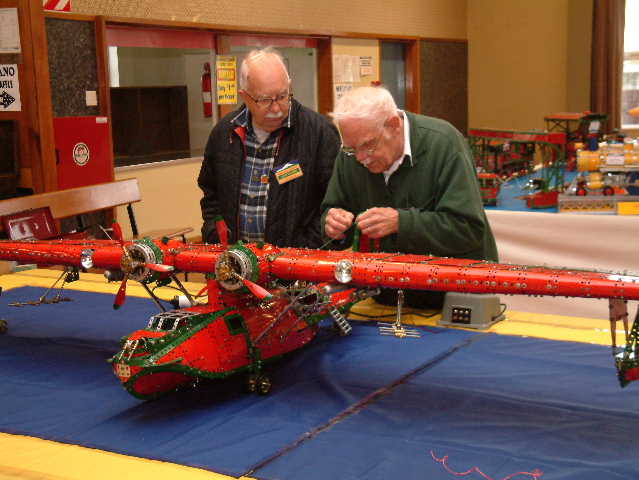
The plane Don modeled it on was the one he flew mostly in. It could be described as a WARCAT, Catalina Type PB2B-1 (Patrol Boat 2nd Boeing manufacture - mark 1). Specifically NZ 4039, Identification letters PAK, #5 Squadron RNZAF. These planes had a crew of nine under war conditions.
The twin aero engines were separately controlled, while the propeller pitch variation was made through a planetary gearbox fitted into each engine nacelle. Given an extra twist to this gearbox imparted the required extra movement to the propellers. All lights worked from the control panel. The main lights on the leading wing edge were mostly used for night landings.
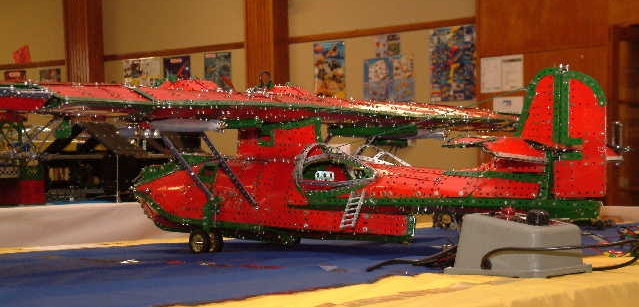
The rudder and tailplane movements were controlled by another motor fitted inside the narrow fuselage close to the tail and were worked by two eccentrics. The main wing ailerons were manually controlled. Don ran out of space in the thickness of the wing to insert two more motors. These ailerons were rather heavy being 15 " long and an inch plus thick at the inner wing position needed to fit in with the wing aerofoil shape. Obviously the wing was double thickness. Wing-tip lights and landing lights were also fitted and separately controlled.
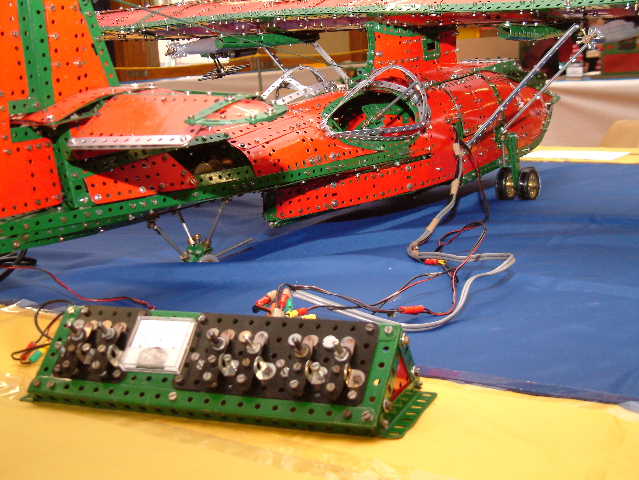
The whole model was controlled by a switch panel made up from Elektrikit parts, contacts, wipers etc and it all worked perfectly the during the Convention.
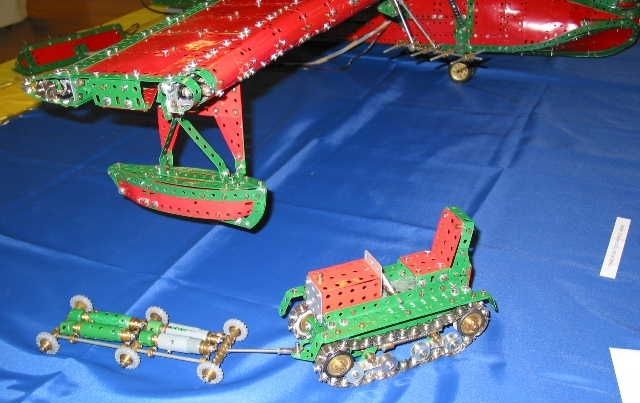
The model was built to a scale of 1:14, which made the wing length about 2.35 metres. There were 5 motors driving it. Four of them inside the wing. The wing tip floats were fully retractable, controlled by a motor each with the drive made by an arm moving along a screwed rod. This was difficult bit, because of the restricted space at the wing tips. All the float braces (used when in the down position) and operating movements had to collapse within themselves within the inch space available.
Don fitted it with the typical bomb load of the times. 2/250 lb contact bombs and 2/375 lb depth charges. The aircraft also carried torpedo racks, so Don inserted them too, though they were not carried at the same time as the bombs and rarely used.
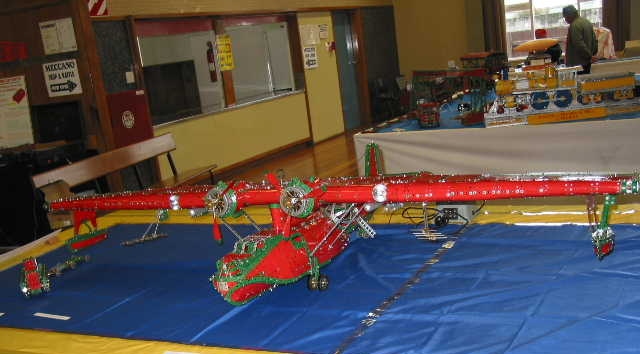
.5 inch guns in the two blister compartments had loaded ammunition belts leading to them and the point 3 twin Brownings were located in the bow turret. The cockpit compartment was fitted with 2 pilots seats, flying controls, engine throttles, compass and instrument panels, There was a lot of detail in there, but most people missed it. Don thinks he should have put a light in to help with this. Fuel dump valves and outlets were fitted to discharge beyond the trailing edge of the wing,(it was not wise to try to land on the open sea with too much gas on board.) Up to 18 hours was a normal flight, but with full tanks and manual adjustments to the petrol/air mix, the endurance could be stretched to 30-36 hours.
#5 & #6 Catalina Squadrons RNZAF picked up some 80 airman from the ocean over 28 occasions in the Pacific. They were called "Dumbo" rescues and were the back-up for American and NZ pilots and crews. The lifeline - you could call it, before the enemy, or the elements and nature (including sharks) got there first.